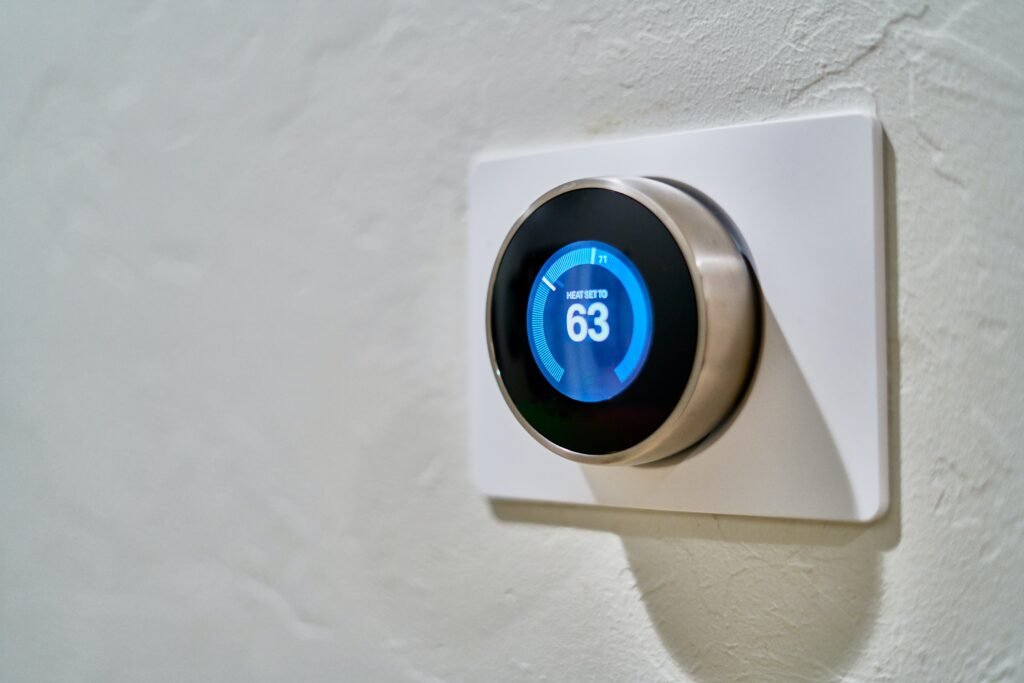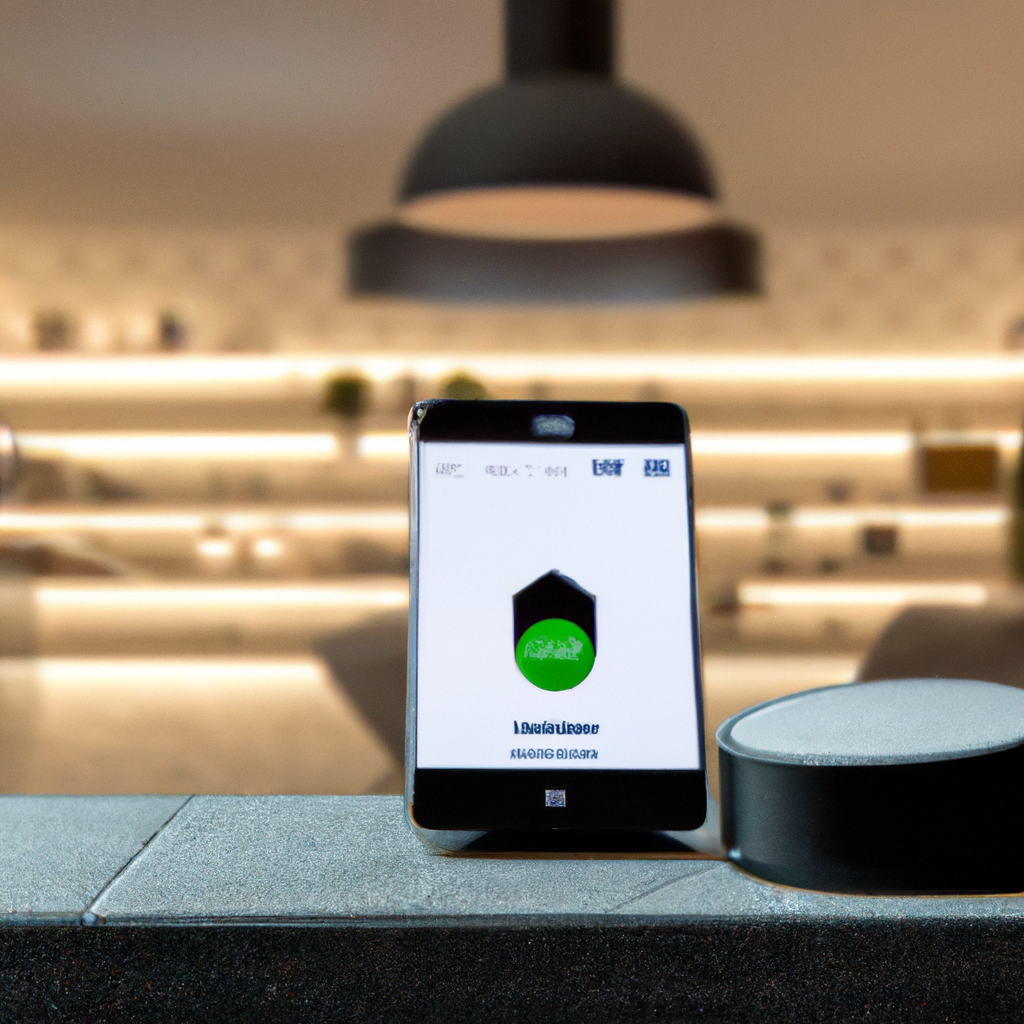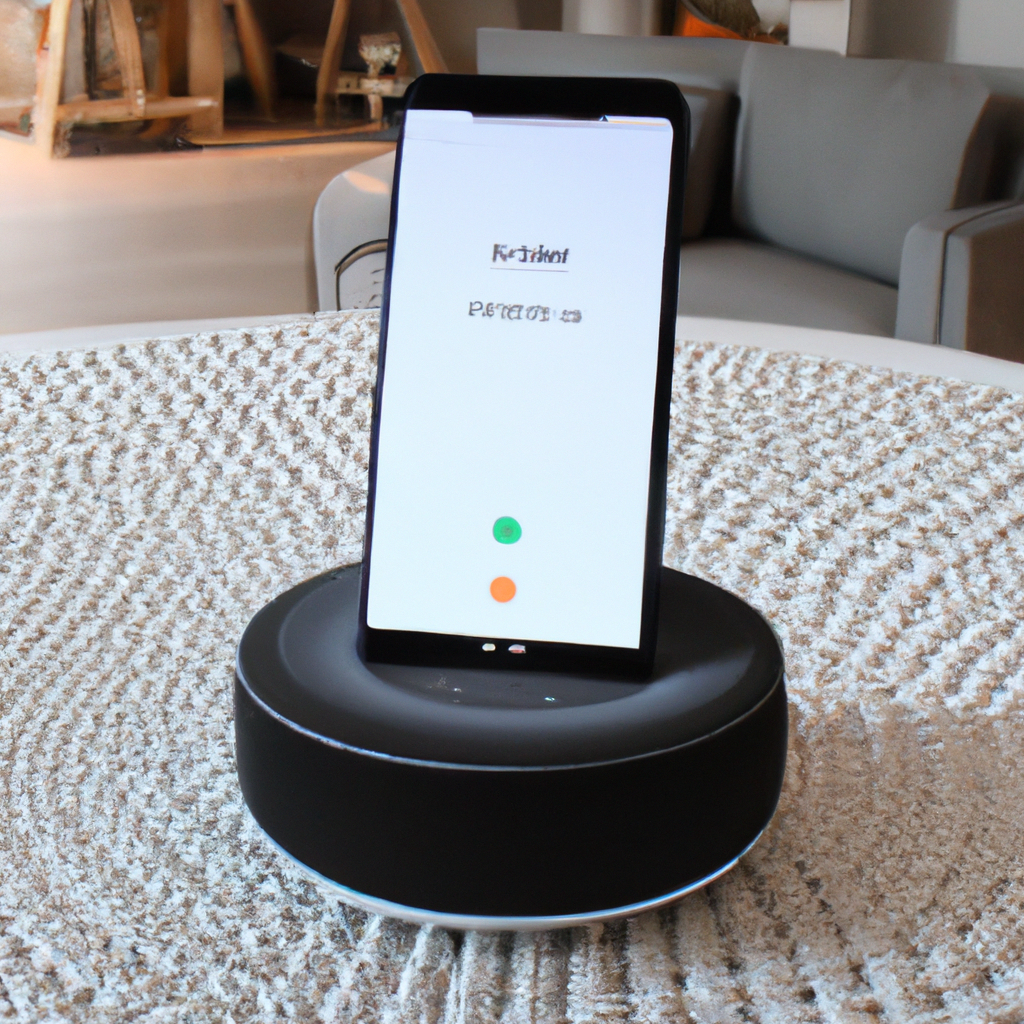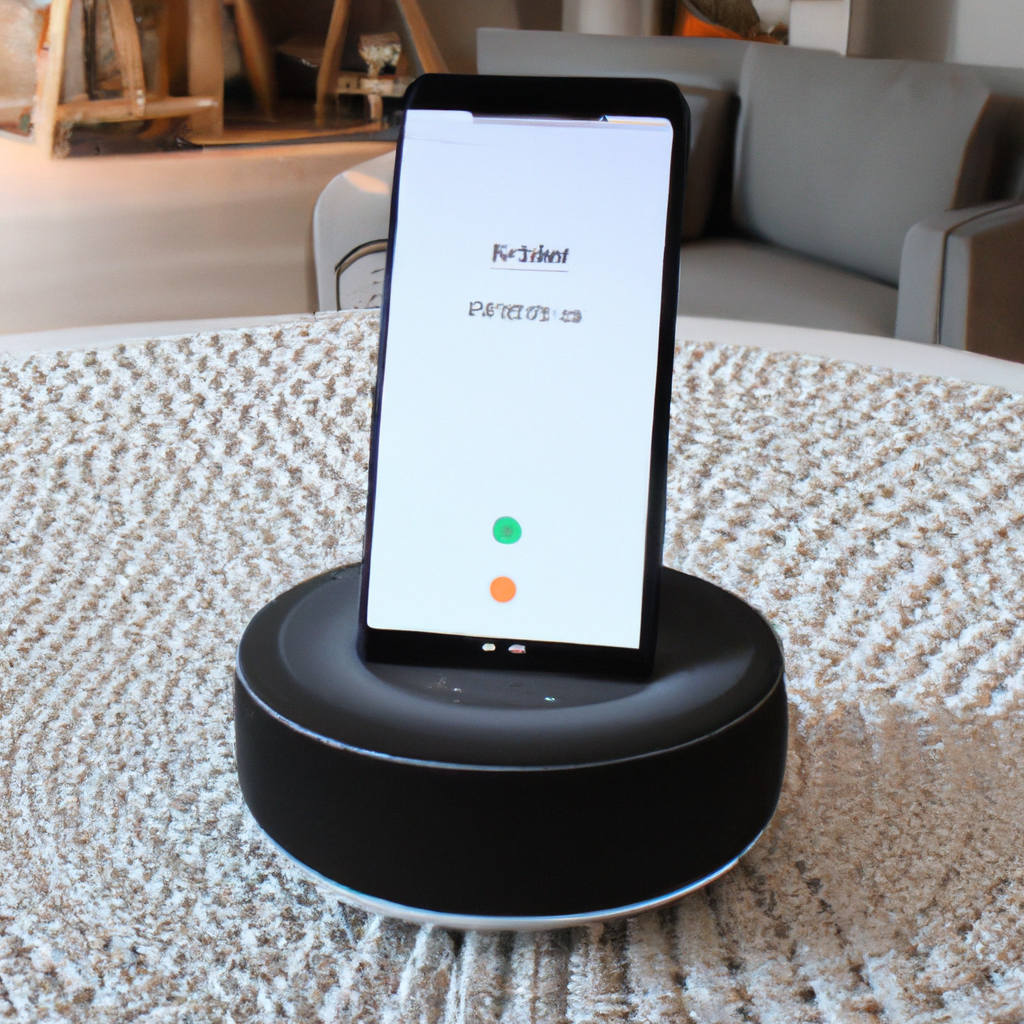In the fascinating realm of modern living, smart homes have managed to carve their way into our everyday lives, intertwining technology and convenience like never before. With the rise of smart homes, homeowners can now control and monitor various aspects of their living spaces with just a few taps on their smartphones or the sound of their voice. From adjusting the lighting and temperature to managing security systems and even making sure the coffee machine starts brewing as your alarm goes off, the possibilities seem endless. Get ready to embark on a journey through the wonders of smart homes, where comfort, efficiency, and innovation merge harmoniously to create a truly remarkable living experience.

Understanding the Concept of Smart Homes
Smart homes are a revolutionary concept that integrates advanced technology to automate various aspects of home living. In simple terms, a smart home is equipped with devices and systems that can be controlled remotely and interact with each other to enhance convenience, comfort, and security for the occupants. The ability to control and manage different functions of a home through a centralized system, often using a smartphone or a virtual assistant, is what makes smart homes so appealing.
Definition of Smart Homes
A smart home is essentially a residential space that incorporates internet-connected devices, sensors, and automation systems to optimize and streamline various aspects of everyday living. These smart devices can range from appliances and gadgets to security systems and entertainment systems. Through the use of wireless connectivity and smart home technology, homeowners can enjoy increased convenience, security, energy efficiency, and control over their living environment.
History and Evolution of Smart Homes
The concept of smart homes originated in the early 20th century, with the invention of basic automation systems such as automatic thermostats and light switches. However, it was not until the 21st century that significant advancements in technology paved the way for the widespread adoption of smart homes. The development of the Internet of Things (IoT), artificial intelligence (AI), and wireless connectivity has revolutionized the capabilities of smart homes, enabling seamless integration and control of various devices and systems.
Significance of Smart Homes in Today’s World
Smart homes have become increasingly significant in today’s world due to their numerous benefits and the rising demand for convenience and efficiency. As technology continues to advance at an unprecedented pace, the integration of smart home technology has become more accessible and affordable for homeowners. Smart homes not only enhance comfort and convenience but also contribute to sustainability efforts through energy-efficient systems. Additionally, the increased focus on security and safety has made smart home security systems a valuable asset for homeowners.
Technological Advances Enabling Smart Homes
Several technological advances have played a crucial role in enabling the development and widespread adoption of smart homes.
Role of Internet of Things (IoT)
The Internet of Things (IoT) is a key component of smart homes, allowing devices and systems to connect and communicate with each other via the internet. IoT enables seamless integration and control of a wide range of devices, from everyday appliances to complex home automation systems. Through IoT, homeowners can remotely monitor and control various aspects of their homes, such as temperature, lighting, security systems, and even kitchen appliances, using their smartphones or other smart devices.
Importance of Artificial Intelligence and Machine Learning
Artificial intelligence (AI) and machine learning are vital technologies that enhance the intelligence and automation capabilities of smart homes. AI-powered virtual assistants, such as Amazon’s Alexa or Google Assistant, can understand voice commands and perform a wide range of tasks, from adjusting the temperature to ordering groceries. Machine learning algorithms enable these virtual assistants to learn and adapt to the preferences and habits of homeowners, providing personalized recommendations and automating routine tasks.
Growth of Wireless Connectivity and Cloud Technology
The growth of wireless connectivity and cloud technology has significantly contributed to the expansion of smart homes. Wi-Fi and Bluetooth technologies enable seamless communication between devices, allowing homeowners to control their smart home systems remotely. Cloud technology provides a secure and scalable platform for storing and accessing data generated by smart home devices. This data can be analyzed to gain valuable insights and improve the overall functionality and efficiency of smart homes.
Influence of Virtual Assistants
Virtual assistants, powered by AI technology, have become an integral part of smart homes. These voice-activated assistants can perform a wide range of tasks, from playing music to controlling home devices and systems. Virtual assistants can streamline daily routines, act as personal organizers, and provide quick access to information and entertainment. With the ability to integrate with various smart home devices, virtual assistants offer a centralized control point for managing multiple aspects of a smart home.

Elements of a Smart Home
A smart home consists of several key elements, each contributing to the overall functionality and automation capabilities of the living space.
Smart Appliances and Gadgets
Smart appliances and gadgets are essential components of a smart home. These devices are equipped with sensors and connectivity features that allow homeowners to monitor and control them remotely. From smart refrigerators that can notify you when you run out of groceries to smart thermostats that can adjust the temperature based on your preferences, smart appliances and gadgets enhance convenience, efficiency, and overall comfort in a smart home.
Home Automation Systems
Home automation systems are the backbone of a smart home. These systems integrate various devices and technologies to enable seamless control and automation of different aspects of a home. Through a centralized control panel or a smartphone app, homeowners can manage lighting, heating, ventilation, air conditioning (HVAC), and other systems. Home automation systems can be programmed to perform specific actions based on predefined schedules or trigger events, providing a personalized and efficient living experience.
Smart Home Security Systems
Security is a top priority for homeowners, and smart home security systems offer enhanced protection and peace of mind. These systems include features such as smart locks, motion sensors, surveillance cameras, and video doorbells. Smart security systems can be remotely monitored and controlled, allowing homeowners to receive real-time alerts and access live video feeds to ensure the safety of their homes and loved ones. Integration with virtual assistants and mobile apps enables seamless control and management of security systems.
Energy Efficiency and Smart Homes
Energy efficiency is a key focus of smart homes, contributing to both cost savings and sustainability. Smart home technology enables homeowners to monitor and optimize energy usage through smart meters, energy management systems, and smart thermostats. These devices can automatically adjust heating, cooling, and lighting based on occupancy, preferences, and time of day. Smart home technology also enables the integration of renewable energy sources, such as solar panels, into the home’s energy system, reducing reliance on traditional energy sources and lowering carbon footprint.
Smart Home Entertainment Systems
Smart home entertainment systems provide homeowners with immersive and personalized entertainment experiences. From smart TVs and audio systems to voice-controlled streaming devices, these systems offer seamless access to a wide range of content and entertainment options. Integration with virtual assistants enables voice control and personalized recommendations based on individual preferences. Additionally, smart home entertainment systems can be synchronized with other smart home devices, such as lighting and HVAC systems, to create immersive experiences that enhance the overall ambiance of a home.
Benefits of a Smart Home
The adoption of smart home technology brings numerous benefits to homeowners, making life more convenient, safe, and efficient.
Convenience and Easier Lifestyle
One of the primary benefits of a smart home is the convenience it offers. With the ability to control and automate various aspects of daily living, homeowners can save time and effort. From remotely adjusting the thermostat before arriving home to setting automated routines that turn on lights and start the coffee maker in the morning, smart homes make everyday tasks easier and more efficient. The integration of virtual assistants also enables voice control, allowing homeowners to perform tasks hands-free.
Increased Safety and Security
Smart home security systems provide enhanced safety and security for homeowners and their properties. With features such as smart locks, surveillance cameras, and motion sensors, homeowners can monitor and control their homes remotely, receive real-time alerts, and ensure the safety of their loved ones. Smart home security systems act as a deterrent to potential intruders and provide peace of mind, whether homeowners are at home or away.
Energy Efficiency and Sustainability
Smart homes contribute to energy efficiency and sustainability efforts. Through the integration of energy management systems and smart thermostats, homeowners can optimize energy usage by automatically adjusting heating, cooling, and lighting based on occupancy and preferences. This leads to significant cost savings on energy bills and reduces the environmental impact. The ability to integrate renewable energy sources, such as solar panels, further enhances the sustainability of smart homes.
Remote Home Control
One of the key advantages of smart homes is the ability to control and monitor various aspects of the home remotely. Whether homeowners are at work, on vacation, or simply in another room, they can use their smartphones or virtual assistants to access and control their smart home systems. This remote control capability allows for increased flexibility, convenience, and peace of mind, ensuring that homeowners can always stay connected and in control of their living environment.
Cost Savings
While the initial cost of implementing smart home technology can be significant, the long-term cost savings can outweigh the investment. Energy-efficient systems and optimized energy usage lead to reduced energy bills. Smart home security systems may also result in lower insurance premiums. Additionally, the automation and efficiency offered by smart home technology can minimize unnecessary expenses, such as energy waste or excessive water usage.

Challenges in Smart Home Adoption
Despite the numerous benefits and increasing popularity of smart homes, several challenges remain in the widespread adoption of this technology.
Privacy and Security Concerns
Privacy and security concerns are among the primary challenges in smart home adoption. With the increasing amount of personal data collected and stored by smart home devices, there is a risk of unauthorized access or data breaches. Homeowners may have concerns about the privacy of their personal information and the potential for surveillance or hacking. Addressing these concerns through robust security measures, encryption protocols, and transparent privacy policies is crucial to building trust among consumers.
High Initial Cost
The upfront cost of implementing smart home technology can be a significant barrier for many homeowners. Smart appliances and devices, along with the necessary home automation systems, can be expensive. Additionally, the cost of professional installation or retrofitting existing homes with smart home capabilities can add to the overall investment. While the long-term cost savings may outweigh the initial expense, the high upfront cost can deter some homeowners from adopting smart home technology.
Complexity in Usage and Setup
The complexity of setting up and using smart home technology can be overwhelming for some homeowners. Integrating different devices, configuring settings, and ensuring compatibility can require technical expertise. The user interfaces of smart home systems and apps should be intuitive and user-friendly to minimize complexity and simplify the setup process. Providing comprehensive guides and tutorials can also empower homeowners to fully utilize the capabilities of their smart home systems.
Risk of Technology Becoming Obsolete
The rapid pace of technological advancements means that smart home devices and systems can quickly become outdated. In a market flooded with new and emerging technologies, homeowners may face the risk of investing in products that become obsolete within a short period. Compatibility issues and the need for frequent updates or replacements can be a challenge for homeowners looking to maintain the functionality and integration of their smart home systems in the long run. Ensuring interoperability and offering upgrade paths are essential for mitigating this challenge.
Market Trends and Predicted Growth of Smart Homes
The market for smart homes is experiencing significant growth, driven by increasing consumer demand and advancements in technology.
Current Market Size
The global smart home market has witnessed remarkable growth in recent years. According to a report by Technavio, the market size was valued at USD 80.8 billion in 2020 and is projected to reach USD 313.28 billion by 2025, with a compound annual growth rate (CAGR) of over 31% during the forecast period. This growth can be attributed to factors such as rising awareness among consumers, improving affordability, and the proliferation of IoT devices.
Regional Adoption Trends
The adoption of smart homes varies across regions, influenced by factors such as cultural differences, infrastructure development, and government policies. North America and Europe are currently leading in terms of smart home adoption, driven by higher disposable incomes and advanced technological infrastructure. Asia-Pacific is expected to witness significant growth in the coming years, fueled by the increasing middle-class population, rising urbanization, and the expansion of IoT infrastructure.
Predicted Future Trends
The future of smart homes is promising, with several trends expected to shape the industry. Integration with 5G networks will enable faster and more reliable connectivity, enhancing the capabilities of smart home devices and systems. The convergence of smart home technology with other emerging technologies, such as augmented reality (AR) and virtual reality (VR), will create immersive experiences and redefine the concept of home entertainment. The demand for voice control and virtual assistants is also set to rise, with advancements in natural language processing and AI technology.
Leading Companies and Their Offerings
Several companies are at the forefront of the smart home industry, offering innovative products and solutions to meet the evolving needs of homeowners. Amazon, with its Echo devices and Alexa virtual assistant, has established itself as a leader in the market. Google, through its Google Nest products and Google Assistant, also commands a significant market share. Other notable players include Apple HomeKit, Samsung SmartThings, and Philips Hue, each offering unique smart home solutions and devices.

Role of Smart Homes in Future Living
Smart homes are set to play a significant role in shaping the future of living, influencing various aspects of lifestyle, design, and accessibility.
Influence on Lifestyle and Daily Tasks
Smart homes will continue to influence and transform the way we live and carry out daily tasks. With the integration of AI technology and virtual assistants, the home environment becomes more intuitive and personalized. Tasks such as shopping, cooking, and cleaning can be automated and simplified, allowing individuals to focus on more meaningful activities. The ability to control and customize lighting, temperature, and audio-visual experiences will create immersive environments tailored to individual preferences, enhancing comfort and well-being.
Changes in Home Design and Architecture
Smart homes are driving changes in home design and architecture, with a greater emphasis on integrating technology seamlessly into the living space. Home automation systems and smart devices are becoming an integral part of architectural plans, enabling the design of homes that can adapt to changing needs and preferences. From built-in sensors and automated control systems to energy-efficient construction techniques, future homes will be designed to maximize comfort, convenience, and sustainability.
Impact on Older Adults and Individuals with Disabilities
Smart homes have the potential to significantly improve the quality of life for older adults and individuals with disabilities. With the ability to automate daily tasks and provide assistance through voice-controlled interfaces, smart homes can enhance independence and reduce reliance on caregivers. Smart home devices, such as wearable health monitoring systems and fall detection sensors, can provide real-time feedback and alerts to ensure the well-being and safety of individuals. As the global population ages, the demand for smart home solutions for seniors and individuals with disabilities is expected to increase.
Smart Homes and the Future of Real Estate
Smart home technology is reshaping the real estate industry, with an increasing number of homebuyers prioritizing smart features when choosing a property. Smart homes offer a competitive advantage for real estate developers and sellers, as they appeal to tech-savvy buyers seeking modern and convenient living experiences. The integration of smart home technology can increase the value of properties and accelerate the sale process. Realtors and developers who embrace smart home technology and promote its benefits are likely to gain a significant edge in the evolving real estate market.
The Regulatory Landscape for Smart Homes
The implementation and growth of smart homes are influenced by existing regulations and standards.
Existing Regulations and Standards
Regulations related to data privacy, cybersecurity, and consumer protection are essential in ensuring the safe and responsible use of smart home technology. Data protection laws, such as the General Data Protection Regulation (GDPR) in the European Union, set guidelines for the collection, storage, and processing of personal data. Standards organizations, such as the International Electrotechnical Commission (IEC) and the National Institute of Standards and Technology (NIST), develop technical standards to ensure interoperability, security, and safety in smart home systems.
Impact of Regulations on Market Growth
Regulations and standards play a crucial role in building trust among consumers and fostering market growth. Clear guidelines and compliance requirements provide assurance to homeowners that their privacy and security are protected. Regulations also incentivize manufacturers and service providers to prioritize security and privacy in their offerings. However, overly burdensome or fragmented regulations can hinder innovation and slow down market adoption. Striking the right balance between regulation and innovation is crucial to foster a thriving and responsible smart home market.
Future Potential Changes in the Regulatory Environment
As smart home technology continues to advance, the regulatory landscape is likely to evolve to address emerging challenges and opportunities. Governments and regulatory bodies may introduce new regulations or update existing ones to keep pace with technological advancements. Issues such as data privacy, cybersecurity, and liability in the event of a smart home system failure may be further addressed through new regulations. Collaboration between industry stakeholders, regulators, and policymakers will be essential to ensure that regulations are effective, promote innovation, and protect consumer interests.

Social and Economic Implications of Smart Homes
The widespread adoption of smart homes has significant social and economic implications that can reshape work patterns, job markets, social interactions, and cultural norms.
Shift in Lifestyle and Work Patterns
Smart homes enable flexible and remote working, allowing individuals to work from the comfort of their homes. The ability to control lighting, temperature, and noise levels, combined with the seamless integration of communication and collaboration tools, enhances productivity and work-life balance. Smart homes also offer new opportunities for entrepreneurship and self-employment, as individuals can leverage the connectivity and automation features to start and run businesses from their homes.
Impact on the Job Market and Capacity Building
The emergence of smart homes has led to the creation of new jobs and skill requirements. From smart home system installers and integrators to data analysts and AI developers, the demand for professionals with expertise in smart home technology is increasing. The education and training sector will also play a crucial role in equipping individuals with the necessary skills to thrive in a smart home-driven economy. Capacity building initiatives and training programs will be essential to ensure that individuals can fully utilize the potential of smart home technology and contribute to economic growth.
Influence on Social Interactions and Cultural Norms
Smart homes can impact social interactions and cultural norms by redefining how individuals interact with each other and their living environments. The integration of virtual assistants and voice-controlled interfaces may reshape communication patterns within households, with voice commands becoming the norm for controlling various aspects of the home. Smart homes can also foster a sense of community and social connectedness through the integration of social networking features and shared experiences. However, the potential impact on privacy and social isolation should be carefully considered to ensure that smart homes enhance, rather than replace, human interactions.
Case Studies of Effective Smart Home Integration
Numerous case studies highlight the successful integration of smart home technology in both individual homes and city-wide initiatives.
Individual Homes and Their Smart Home Success Stories
Many homeowners have embraced smart home technology and shared their success stories. For example, a family was able to significantly reduce their energy consumption and carbon footprint by integrating smart thermostats, solar panels, and energy management systems into their home. Another homeowner utilized smart security systems to remotely monitor their property, leading to the apprehension of a burglar. These success stories demonstrate the tangible benefits of smart home technology and its positive impact on daily living.
City-wide Smart Home Initiatives and Their Outcomes
Cities around the world are implementing smart home initiatives to enhance energy efficiency, sustainability, and quality of life for residents. For instance, Barcelona implemented a city-wide smart lighting system, which reduced energy consumption and enhanced safety. Copenhagen introduced a district heating network controlled by smart home thermostats, resulting in significant energy savings and reduced emissions. These initiatives demonstrate the potential of smart homes to transform entire communities and contribute to broader sustainability goals.
Lessons Learned and Best Practices for Smart Home Implementation
Successful smart home implementation requires careful planning, collaboration, and consideration of various factors. It is crucial to prioritize interoperability and compatibility between devices and systems to ensure seamless integration. Moreover, educating homeowners about the benefits and functionalities of smart home technology is essential for adoption. Technical support and regular software updates are also vital to maintaining the long-term functionality of smart home systems. Collaboration between manufacturers, service providers, and policymakers can help establish best practices and industry standards that foster innovation and drive the adoption of smart homes.
In conclusion, smart homes have emerged as a game-changer in modern living, offering convenience, efficiency, and enhanced quality of life for homeowners. The evolving technology landscape, driven by IoT, AI, and wireless connectivity, enables seamless integration and control of various devices and systems within a home. While challenges such as privacy concerns and high initial costs exist, the market for smart homes continues to grow, fueled by increasing consumer awareness and advancements in technology. The future of smart homes holds tremendous potential, influencing not only lifestyle and design but also job markets, social interactions, and cultural norms. Through responsible regulation, capacity building initiatives, and collaboration, the benefits of smart homes can be harnessed, transforming the way we live and shaping the future of living spaces.
